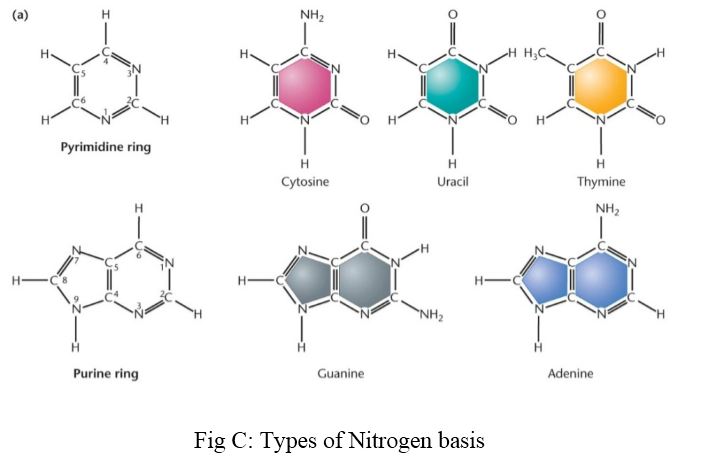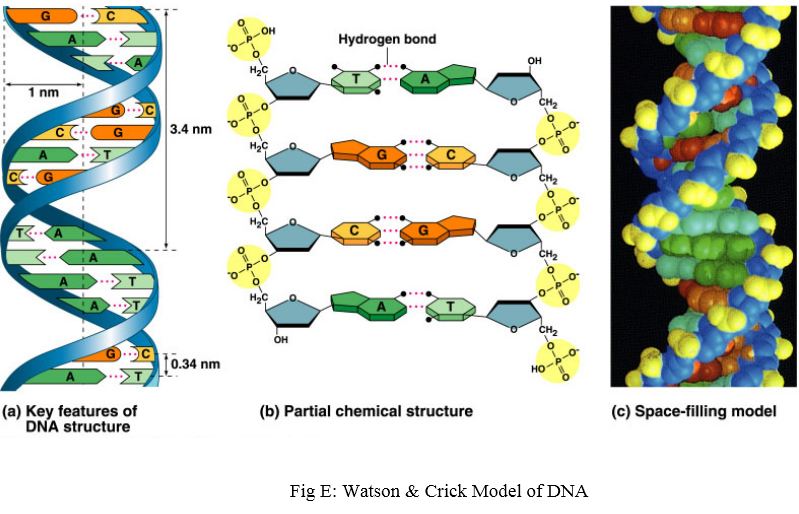Master the structure of DNA by reading this!
Once in a life time, everyone must have heard the term DNA. Now you can recall that later because we are going to learn here something more about DNA.
DNA is genetic material. Chromosomes are made up of DNA. In Human cell, 46 chromosomes (23 Pairs) are present. A small segment of DNA over chromosome is known as gene. Gene is ultimately storing all genetic information. It carries all information for formation of any kind of protein. You know this right? Here! All we are going to learn about is structure of DNA.
A detailed study of structure of DNA was explained by Watson & crick. They got Noble Prize (1962) for explaining this too. Term DNA was given by Zaccharis.
DNA is a polymer. Its monomeric unit is known as nucleotide. Before learning about a big molecule DNA, let me tell you about structure of nucleotide.
Nucleotide if further made up of three things viz. Phosphate group, ribose sugar & nitrogenous group (Fig A).
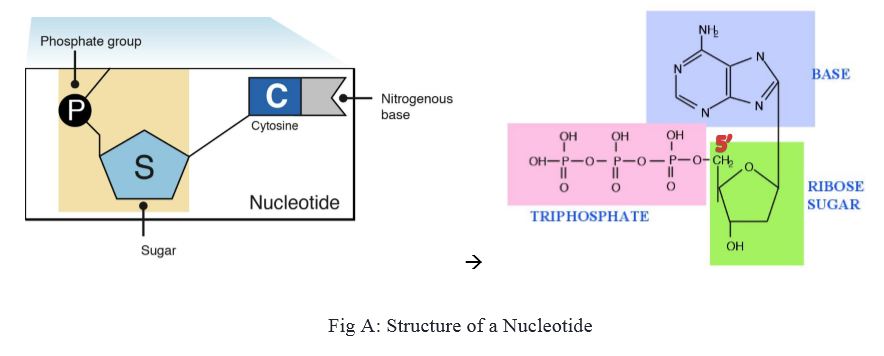
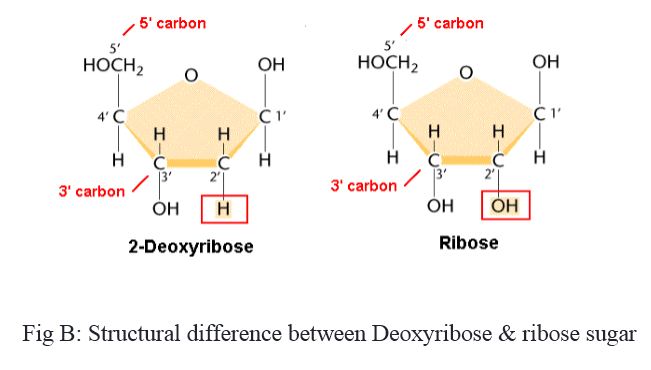 Phosphate Group – It is attached to 5’ C of Sugar molecule (Fig A). There can be mono, di or tri phosphate.
Phosphate Group – It is attached to 5’ C of Sugar molecule (Fig A). There can be mono, di or tri phosphate.
Ribose Sugar – It’s basically a ring of 5 carbons. RNA consists of ribose sugar while DNA consists of deoxyribose sugar (Fig B).
Nitrogenous bases – Nitrogenous bases are of two types viz. Purines & Pyrimidines (Fig C). DNA consists of A, T, C & G as its bases. While RNA consists of A, U, C & G. Let me tell you their full form as well 🙂
T – Thymine
C – Cytosine
G – Guanine
U – Uracil
DNA is basically a chain of nucleotides known as Polynucleotides. One nucleotide is attached to another by making phosphodiester bond. One water molecule is also released in this process (Fig D). 3’C of one sugar molecule make bonds with Phosphate group attached to the 5’C of another sugar. That’s why we call it as 5’ -3’ Phosphodiester bond.
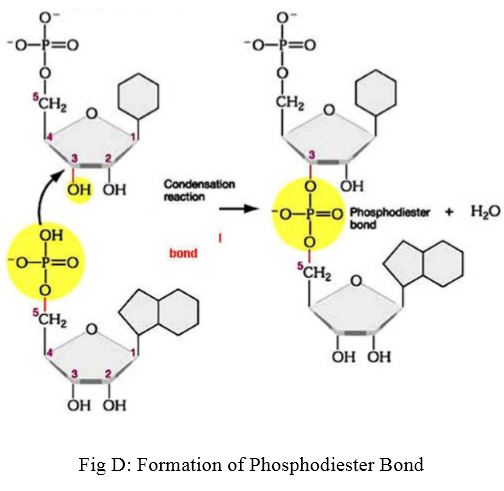 One polynucleotide chain is bonded with another chain to form the double stranded molecule. Energy required for formation of DNA is fulfilled by itself. No external source is required. A number of nucleotides (dATP, dGTP, dCTP, dTTP) are present which give the energy.
One polynucleotide chain is bonded with another chain to form the double stranded molecule. Energy required for formation of DNA is fulfilled by itself. No external source is required. A number of nucleotides (dATP, dGTP, dCTP, dTTP) are present which give the energy.
One strand of DNA moves in 5’ to 3’ direction while another strand of DNA moves in 3’ to 5’ direction. That’s why we say that DNA is double stranded molecule which consists of antiparallel strands. In between the two strands, Nitrogenous base of one nucleotide in one strand makes bond with another nitrogenous base of other strand.
A is bonded to T by two Hydrogen bonds (A=T) While C is bonded to G by three Hydrogen bonds (C≡G). This base pairing is known as complimentary base pairing. Sugar & Phosphate groups are present in the strand itself & that why they form the backbone of DNA.
Presence of Hydrogen bonds & Phosphodiester bonds makes DNA a strong molecule.
Let me tell you some more features of DNA as explained by Watson & crick.
- DNA is a three dimensional structure with two mutually twisted strands. DNA is right handed helix.
- Diameter of DNA is 20nm (20A0). Distance between adjacent base pair is .34nm (3.4A0).
- One complete turn of Helix is 3.4nm (34A0).
- DNA consists of Major (deep) groove & minor (shallow) groove.
- Along a polynucleotide chain, base sequence is variable. Genetic information is carried by specific base sequence.
- DNA consists of two things core + Backbones. Core is made up of nitrogenous bases (Purine & Pyrimidines) while backbone is made up of sugar & phosphate.
What decides the base compositions of DNA?
Erwin Chargaff (1950) explains certain rules about this composition. Let’s study about that too.
- Amount of one base (Purines) is always equals to another base (Pyrimidines). A=T & C=G.
- Relative amount of nitrogenous bases varies from one species to another species but it is fixed in one species.
- Sum of Purines = Sum of Pyrimidines (A+C = G+T)
- A+T = Constant for a species (Range .4 -1.9). C+G
Information about DNA is still left. Yes! You can dive into this link for learning.
If you don’t know me, I am Anjali Ahuja, Biology Educator, a member from the pool of askIITians. We try our best to provide best of study material to you guys. Jump into this link to have a look.
PCM material is also available at link.
- Excited
- Fascinated
- Amused
- Bored
- Sad
- Angry

